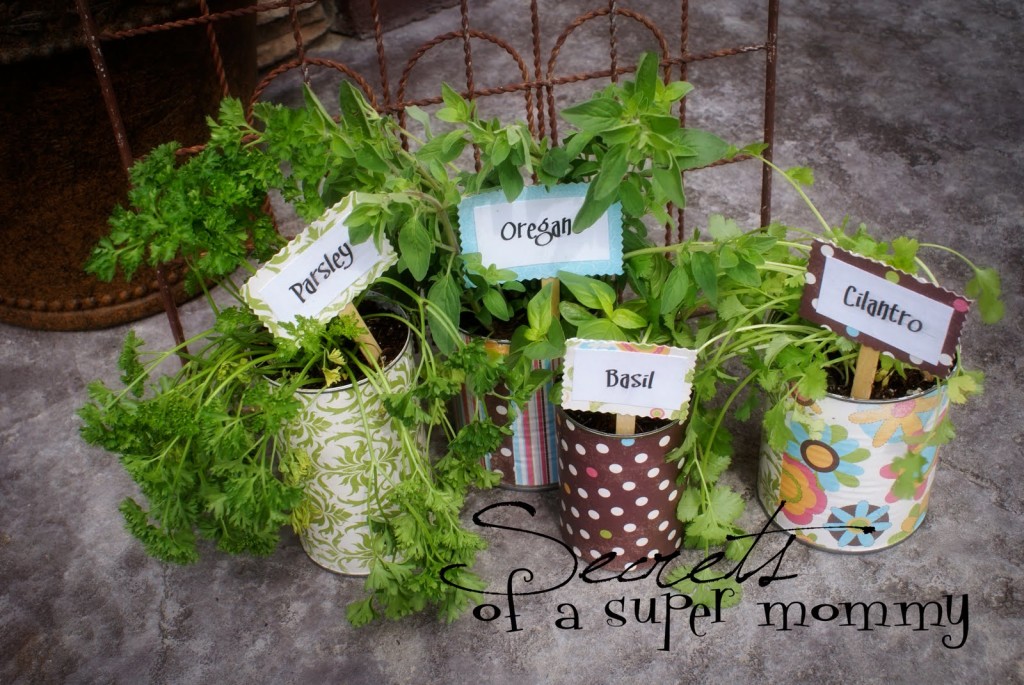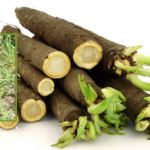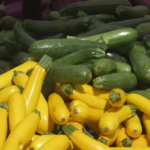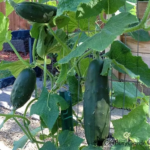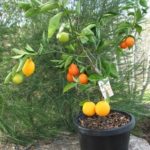Growing Herbs at Home
Growing herbs at home is a fun, money-saving hobby that also happens to be good for your health. In addition to flavoring up your favorite dishes, herbs are filled with antioxidants and essential nutrients, and some of them have an added benefit by keeping pests away in your Garden. (THE SEED GUY has a Seed package that gives you 10 FREE Herbs listed below)
“Half… of the nutritional value of Herbs is lost within thirty minutes of harvesting,” says Brian Hetrich, a Naturopathic doctor and gardening expert at the Hippocrates Health Institute, in West Palm Beach, Fla. “When you grow your own herbs, you can use what you need at the moment by harvesting small amounts, fresh from the plant.” Most Herbs can be grown indoors in containers. Listed below is just a few of them.
ROSEMARY
This pretty, aromatic herb contains compounds, such as carnosic acid, that have been shown to fight cancer cells. What’s more, the smell of rosemary may even improve your memory. In a recent study from the University of Northumbria, in the UK, people performed better on various memory tasks if rosemary scent was pumped into the room.
Grow tip: Rosemary grows best with full sunshine and frequent watering. I like to plant it where you will brush it as you walk by. “All you need to do is touch it and it’ll release its very fragrant aroma.”
THYME
Thyme has long been used as an herbal remedy for respiratory problems such as bronchitis, and it also has antiseptic properties. (Thymol, one of the compounds it contains, is a key ingredient in Listerine.) Even better, thyme is virtually calorie-free and provides a delicious boost of flavor to soups, salads, and just about any other recipe you can think of, even champagne!
Grow tip: Small but plentiful flowers make this herb a pretty option for your home. Thyme’s well suited for indoor growing because it stays small in size. Just make sure it has access to plenty of sunshine.
LAVENDER
Lavender isn’t just a pretty plant; it’s also packed with health benefits. Its fragrance is soothing (helping you to fall asleep), and it contains antioxidants known as polyphenols that fight belly bloating.
row tip: Lavender is a relatively large plant that grows best outdoors. Keep it in a sunny area that gets eight hours of light each day. Lavender requires well-drained soil, so if you do opt to plant indoors, make sure your pot has holes in the bottom to provide adequate drainage.
BASIL
Basil is known to calm nerves, is a good source of fiber, and has a detoxifying effect on the liver. (Out late partying? Try incorporating basil into your brunch!) Basil oil has also been found to help clear skin blemishes, thanks to its powerful anti-inflammatory activity. A little basil goes a long way.
Grow tip: Basil is a hardy plant that grows easily, indoors or out. It doesn’t need much care and requires watering only every other day.
PARSLEY
Don’t leave this common garnish sitting on the side of your plate! Parsley is full of nutrients. It contains vitamins A and C, and just one tablespoon offers more than half of your recommended daily intake of vitamin K, a nutrient that’s essential for healthy blood.
Grow tip: Parsley is easy to grow, as it doesn’t need much sunlight or maintenance. (Just make sure the soil doesn’t get too dry; once the plant wilts it rarely recovers.) Parsley does grow at a slower rate than other herbs, but it’s worth the wait.
SAGE
Many beauty products include sage on their ingredient lists, and it’s no wonder: Sage has antiseptic and antioxidant properties, which can help in the fight against early aging—a bonus for any beauty product. Sage has also been used as a natural remedy for anxiety and fatigue, and is thought to be a memory enhancer.
Grow tip: Sage is a relatively high-maintenance herb. To thrive, it needs plenty of sunlight, good soil, and a watering every other day.
CILANTRO (Coriander)
A staple of Mexican and Asian cuisines, cilantro supplies fiber and iron and helps clear heavy metals from your body. “Our body mistakes heavy metals for nutrients. “Cilantro attaches itself to mercury, lead, and other toxic heavy metals and draws them out of your tissues.”
Grow tip: Because of its deep taproot, cilantro needs deep soil to thrive and is one of the few herbs that are a real challenge to grow indoors. On the plus side, if your plant does go to seed,
don’t throw the seeds away; they’re the tasty spice known as coriander.
CHIVES
This tasty herb—part of the onion family—can help boost your immune system. Multiple studies even suggest that eating allium vegetables, a category that includes garlic and scallions in addition to chives, is associated with a lower risk of developing certain cancers, including those of the prostate, stomach, and breast.
Grow tip: Chives are one of my favorite herbs. They grow easily, can be grown indoors, and don’t need much light. They grow to be about 18 inches tall, but don’t require much space to flourish.
DILL
This flavorful herb isn’t just for pickles! It’s a great source of antioxidants (such as beta-carotene), and is also said to cure hiccups. Next time you get the hiccups, mix a teaspoon of dill leaf with a cup of boiled water, strain out the leaves, and drink the liquid slowly.
Grow tip: Dill requires full sun and grows best in deep soil that’s not too dense, so your best bet is to plant it outside or in a large
pot indoors. Dill needs watering only once a week if planted outside; inside, it requires some additional attention.
MINT
Mint is a rich source of vitamin A, providing more than half of your recommended daily intake in just two tablespoons. In addition, mint is good for the breath, digestion, nausea, headaches, respiratory disorders, asthma, pimples, [and] cavities. Need another reason to use this herb? A recent study found that essential oils in peppermint have a positive effect on exercise performance, respiratory rate, and blood pressure.
FENUGREEK
Fenugreek has also been used to treat arthritis, asthma, bronchitis, improve digestion, maintain a healthy metabolism, increase libido and male potency, cure skin problems (wounds, rashes and boils), treat sore throat, and cure acid reflux. Recent studies have shown that Fenugreek helps lower blood glucose and cholesterol levels, and may be an effective treatment for both type 1 and 2 diabetes. It is also being studied for its cardiovascular benefits.
Grow tip: Fenugreek likes a sunny area in your home to grow. Seeds normally take 7 days to germinate, and then you can cut leaves a number of times throughout the winter. If you want the Seeds, let it flower, and then you will be able to harvest them (usually after 6 weeks).
Now that you have all the information to grow these gorgeous herbs at home stop on by the seed guy web site and get your heirloom seeds for all your gardening needs.
Source Danny Look
 This is an aggregated site. Please be aware some of the sites we link you to could have pop ups. We have no control over them. However, we will never link you to a site that requires you to make any purchase to view the blog.
This is an aggregated site. Please be aware some of the sites we link you to could have pop ups. We have no control over them. However, we will never link you to a site that requires you to make any purchase to view the blog.
Please read our disclaimer. We provide you with information from various sites all over the world. The author’s expressed opinion isn’t necessarily that of The Prepared Page or its staff. Our intent is to bring you the information. Use your and your own best judgment when using any information contained within the blogs.
While you’re here check out some of the other posts you may find them interesting!!!
Some posts may contain affiliate links.

